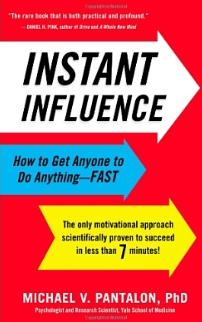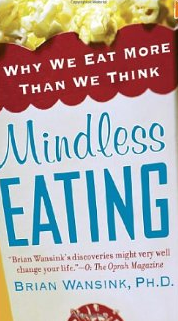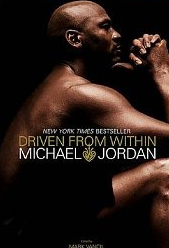I recently finished “The 48 Laws of Power” by Robert Greene. Below are the quotes I found most interesting. As always, if you like the quotes, please buy the full book here.
 “When you are trying to impress people with words, the more you say, the more common you appear, and the less in control. Even if you are saying something banal, it will seem original if you make it vague, open-ended and sphinxlike.” (ix)
“When you are trying to impress people with words, the more you say, the more common you appear, and the less in control. Even if you are saying something banal, it will seem original if you make it vague, open-ended and sphinxlike.” (ix)
“When you are weaker, never fight for honor’s sake; choose surrender instead.” (xii)
“Any mistakes you commit through audacity are easily corrected with more audacity. Everyone admires the bold; no one honors the timid.” (xiii)
“You actions must seem natural and executed with ease. All the toil and practice that go into them, and also all the clever tricks, must be concealed. When you act, act effortlessly, as if you could do much more.” (xiii)
“Give people options that come out in your favor whichever one they choose.” (xiii)
“Never appeal to truth and reality unless you are prepared for the anger that comes from disenchantment.” (xiii)
“By acknowledging a petty problem you give it existence and credibility. The more attention you pay an enemy, the stronger you make him; and a small mistake is often made worse and more visible when you try to fix it. It is sometimes best to leave things alone. If there is something you want but cannot have, show contempt for it. The less interest you reveal, the more superior you seem.” (xiv)
“Appearing better than others is always dangerous, but most dangerous of all is to appear to have no faults or weaknesses. Envy creates silent enemies. It is smart to occasionally display defects, and admit to harmless vices, in order to deflect envy and appear more human and approachable. Only gods and the dead can seem perfect with impunity.” (xvi)
“Today we face a peculiarly similar paradox to that of the courtier: Everything must appear civilized, decent, democratic, and fair. But if we play by those rules too strictly, if we take them too literally, we are crushed by those around us who are not so foolish.” (xvii)
“The most important of these skills, and power’s crucial foundation, is the ability to master your emotions. An emotional response to a situation is the single greatest barrier to power, a mistake that will cost you a lot more than any temporary satisfaction you might gain by expressing your feelings. Emotions cloud reason, and if you cannot see the situation clearly, you cannot prepare for and respond to it with any degree of control.” (xix)
“Anger is the most destructive of emotional responses, for it clouds your vision the most. It also has a ripple effect that invariably makes situations less controllable and heightens your enemy’s resolve. If you are trying to destroy an enemy who has hurt you, far better to keep him off-guard by feigning friendliness than showing your anger.” (xix)
“You cannot repress anger or love, or avoid feeling them, and you should not try. But you should be careful about how you express them, and most important, they should never influence your plans and strategies in any way.” (xx)
“Instead of spending your time dreaming of your plan’s happy ending, you must work on calculating every possible permutation and pitfall that might emerge in it.” (xx)
“Patience is the supreme virtue of the gods, who have nothing but time. Everything good will happen – the grass will grow again, if you give it time and see several steps into the future. Impatience, on the other hand, only makes you look weak. It is a principal impediment to power.” (xxi)
“Power is essentially amoral and one of the most important skills to acquire is the ability to see circumstances rather than good or evil.” (xxi)
“Never waste valuable time, or mental peace of mind, on the affairs of others – that is too high a price to pay.” (xxii)
“The producer of a great work wants to feel he is more than just the provider of the financing. He wants to appear creative and powerful, and also more important than the work produced in his name.” (4)
“When it comes to power, outshining the master is perhaps the worst mistake of all.” (4)
“It is a deadly but common misperception to believe that by displaying and vaunting your gifts and talents, you are winning the master’s affection.” (5)
“Never imagine that because the master loves you, you can do anything you want.” (5)
“Never take your position for granted and never let any favors you receive go to your head.” (6)
“Since honesty rarely strengthens friendship, you may never know how a friend truly feels.” (12)
“People want to feel they deserve their good fortune. The receipt of a favor can become oppressive: It means you have been chosen because you are a friend, not necessarily because you are deserving. There is almost a touch of condescension in the act of hiring friends that secretly afflicts them. The injury will come out slowly: A little more honesty, flashes of resentment and envy here and there, and before you know it your friendship fades. The more favors and gifts you supply to revive the friendship, the less gratitude you receive.” (12)
“Keep friends for friendship, but work with the skilled and competent.” (13)
“Never let the presence of enemies upset or distress you – you are far better off with a declared opponent or two than not knowing where your real enemies lie.” (14)
“Sometimes any emotion is better than the boredom of security.” (18)
“Honesty is actually a blunt instrument, which bloodies more than it cuts.” (20)
“The less you say, the more profound and mysterious you appear.” (35)
“Make your reputation simple and base it on one sterling quality.” (42)
“To create a crowd you have to do something different and odd. Any kind of curiosity will serve the purpose, for crowds are magnetically attracted by the unusual and inexplicable. And once you have their attention, never let it go.” (47)
“At the beginning of your rise to the top, then, spend all your energy on attracting attention. Most important: The quality of the attention is irrelevant. No matter how badly his shows were reviewed, or how slanderously personal were the attacks on his hoaxes, Barnum would never complain.” (47)
“Society craves larger-than-life figures, people who stand above the general mediocrity. Never be afraid, then, of the qualities that set you apart and draw attention to you. Court controversy, even scandal. It is better to be attacked, even slandered, than ignored.” (48)
“Once in the limelight you must constantly renew it by adapting and varying your method of courting attention. If you don’t, the public will grow tired, will take you for granted, and will move on to a newer star. The game requires constant vigilance and creativity.” (48)
“Learn to get others to do the work for you while you take the credit, and you appear to be of godlike strength and power. If you think it is important to do all the work yourself, you will never get far. Find people with the skills and creativity you lack.” (59)
“Win through your actions, never through argument.” (69)
“Learn to demonstrate the correctness of your ideas indirectly.” (71)
“The problem in trying to prove a point or gain victory through argument is that in the end you can never be certain how it affects the people you’re arguing with: They may appear to agree with you politely, but inside they may resent you. Or perhaps something you said inadvertently even offended them – words have that insidious ability to be interpreted according to the other person’s mood and insecurities. Even the best argument has no solid foundation, for we have all come to distrust the slippery nature of words. And days after agreeing with someone, we often revert to our old opinion out of sheer habit.” (72)
“Never associate with those who share your defects – they will reinforce everything that holds you back. Only create associations with positive affinities. Make this a rule of life and will benefit more than from all the therapy in the world.” (81)
“Be the only one who can do what you do, and make the fate of those who hire you so entwined with yours that they cannot possibly get rid of you.” (83)
“If you are ambitious, it is much wiser to seek out weak rulers or masters with whom you can create a relationship of dependency. You become their strength, their intelligence, their spine. What power you hold! If they got rid of you the whole edifice would collapse.” (84)
“You do not have to have the talent of a Michelangelo; you do have to have a skill that sets you apart from the crowd. You should create a situation in which you can always latch on to another master or patron but your master cannot easily find another servant with your particular talent. And if, in reality, you are not actually indispensable, you must find a way to make it look as if you are. Having the appearance of specialized knowledge and skill gives you leeway in your ability to deceive those above you into thinking they cannot do without you.” (86)
“What good is power if it brings you no peace?” (87)
“The drive for complete control is often ruinous and fruitless. Interdependence remains the law, independance a rare and often fatal exception.” (88)
“Even the most powerful person is locked inside needs of his own, and that if you make no appear to his self-interest, he merely sees you as desperate or, at best, a waste of time.” (98)
“The shortest and best way to make your fortune is to let people see clearly that it is in their interests to promote yours. (Jean de La Bruyere)” (100)
“You must distinguish the differences among powerful people and figure out what makes them tick. When they ooze greed, do not appeal to their charity. When they want to look charitable and noble, do not appeal to their greed.” (100)
“In the realm of power, your goal is a degree of control over future events.” (103)
“There will be people you cannot win over, who will remain your enemies no matter what. But whatever wound you inflicted on them, deliberately or not, do not take their hatred personally. Just recognize that there is no possilbity of peace between you, especially as long as you stay in power. If you let them stick around, they will seek revenge, as certainly as night follows day. To wait for them to show their cards is just silly, by then it will be too late.” (113)
“You must learn when to leave. Create value through scarcity.” (115)
“A man said to a Dervish: Why do I not see you more often?” The Dervish replied, “Because the words ‘Why have you not been to see me?’ are sweeter to my ears than the words ‘Why have you come again?’” -Mulla Jami (119)
“One chess master said, “Fischer doesn’t just look for the best move. He looks for the move that will disturb the man he is playing.”” (125)
“Only the terminally subordinate act in a predictable manner.” (128)
“The moment you lose contact with your people, seeking security in isolation, rebellion is brewing. Never imagine yourself so elevated that you can afford to cut yourself off from even the lowest echelons.” (134)
“Artists who hole themselves up in their fortress lose a sense of proportion, their work communicating only to their small circle. Such art remains cornered and powerless.” (135)
“When you meet a swordsman, draw your sword: Do not recite poetry to one who is not a poet.” -Ch’an (138)
“You can never be sure who you are dealing with. A man who is of little importance and means today can be a person of power tomorrow. We forget a lot in our lives, but we rarely forget an insult.” (142)
“People who rush to the support of others tend to gain little respect in the process, for their help is so easily obtained, while those who stand back find themselves besieged with supplicants. Their aloofness is powerful, and everyone wants them on their side.” (149)
“Once you step into a fight that is not of your choosing, you lose all initiative. The combatants’ interests become your interests; you become their tool. Learn to control yourself, to restrain your natural tendency to take sides and join the fight. Be friendly and charming to each of the combatants, then step back as they collide. With every battle they grow weaker, while you grow stronger with every battle you avoid.” (152)
“Most people operate in a whirlpool of emotions, constantly reacting, churning up squabbles and conflicts. Your self-control and autonomy will only bother and infuriate them. They will try to draw you into the whirlpool, begging you to take sides in their endless battles, or to make peace for them.” (152)
“Given how important the idea of intelligence is to most people’s vanity, it is critical never inadvertently to insult or impugn a person’s brain power. That is an unforgivable sin.” (159)
“The easier they think it is to prey on you, the more easily you can turn the tables. This trick is laso useful if you are ambitious yet find yourself low in the hierarchy: Appearing less intelligent than you are, even a bit of a fool, is the perfect disguise. Look like a harmless pig and no one will believe you harbor dangerous ambitions. They may even promote you since you seem so likeable, and subservient.” (160)
“People trying to make a show of their authority are easily deceived by the surrender tactic. Your outward sign of submission makes them feel important; satisfied that you respect them, they become easier targets for a later counterattack, or for the kind of indirect ridicule used by Brecht. Measuring your power over time, never sacrifice long-term maneuverability for the short-lived glories of martyrdom.” (167)
“When the great lord passes, the wise peasant bows deeply and silently farts.” -Ethiopian proverb (167)
“What gets us into trouble in the realm of power is often our own overreaction to the moves of our enemies and rivals. The overreaction crates problems we would have avoided had we been more reasonable.” (167)
“The mind must not wander from goal to goal, or be distracted by success from its sense of purpose and proportion. What is concentrated, coherent, and connected to its past has power. What is dissipated, divded, and distended rots and falls to the ground. The bigger it bloats, the harder it falls.” (172)
“Concentrate on a single goal, a single task, and beat it into submission.” (175)
“In any organization it is inevitablele for a small group to hold the strings. And often it is not those with the titles.” (175)
“Practice Nonchalancee. Never seem to be working too hard. Your talent must appear to flow naturally, with an ease that makes people take you for a genius rather than a workaholic. Even when something demands a lot of sweat, make it look effortless – people prefer to not see your blood and toil, which is another form of ostentation.” (180)
“Be frugal in asking those above you for favors. Nothing irritates a master more than having ot reject someone’s request. It stirs up guilt and resentment. Ask for favors as rarely as possible, and know when to stop.” (181)
“Do not be the court cynic. Express admiration for the good work of others. If you constantly criticize your equals or subordinates some of that criticism will rub off on you, hovering over you like a gray cloud wherever you go. People will groan at each new cynical comment, and you will irritate them. By expressing modest admiration for other people’s achievements, you paradoxically call attention to your own. The ability to express wonder and amazement, and seem like you mean it, is a rare and dying talent, but one still greatly valued.” (181)
“Honesty is a fool’s game. Never be so self-absorbed as to believe that the master is interested in your criticisms of him, no matter how accurate they are.” (183)
“Never imagine that skill and talent are all that matter. In court the courtier’s art is more important than his talent; never spend so much time on your studies that you neglect your social skills. And the greatest skill of all is the ability to make the master look more talented than those around him.” (184)
“People of power, are undone not by the mistakes they make, but by the way they deal with them.” (202)
“One should not be too straightforward. Go and see the forest. The straight trees are cut down, the crooked ones are left standing.” -Kautilya (211)
“As a leader you may imagine that constant diligence, and the appearance of working harder than anyone else, signify power. Actually, though, they have the opposite effect: They imply weakness. Why are you working so hard? Perhaps you are incompetent, and have to put in extra effort just to keep up; perhaps you are one of those people who does not know how to delegate, and has to meddle in everything. The truly powerful, on the other hand, seem never to be in a hurry or overburdened. While others work their fingers to the bone, they take their leisure. They know how to find the right people to put in the effort while they save their energy and keep their hands out of the fire.” (211)
“Do everything pleasant yourself, everything unpleasant through third parties. By adopting the first course you win favor, by taking the second you deflect ill will. Important affairs often require rewards and punishments. Let only the good come from you and the evil from others.” -Baltasar Gracian (213)
“If you have power and are secure in it, you should sometimes play the penitent: With a sorrowful look, you ask for forgiveness from those weaker than you. It is the ploy of the king who makes a show of his own sacrifices for the good of the people. Similarly, upon occasion you may want to appear as the agent of punishment in order to instill fear and trembling in your subordinates.” (214)
“Remember: People are not interested in the truth about change. They do not want ot hear that it has come from hard work, or from anything as banal as exhaustion, boredom, or depression; they are dying to believe in something romantic, otherworldly. They want to hear of angels and out-of-body experiences. Indulge them.” (221)
“Voice what the public feels – the expression of shared feelings is always powerful.” (233)
“Understand: If boldness is not natural, neither is timidity. It is an acquired habit, picked up out of a desire to avoid conflict. If timidity has taken a hold of you, then, root it out. Your fears of the consequences of a bold action are way out of proportion to reality, and in fact the consequences of timidity are worse. Your value is lowered and you create a self-fulfilling cycle of doubt and disaster. Remember: The problems created by an audacious move can be disguised, even remedied, by more and greater audacity.” (234)
“Improvisation will only bring you as far as the next crisis, and is never a substitute ofr thinking several steps ahead and planning to the end.” (239)
“Unhappy endings are much more common than happy ones – do not be swayed by the happy ending in your mind.” (242)
“Avoid the temptation of revealing how hard you work – it only raises questions. Teach no one your tricks or they will be used against you.” (245)
“Your audience must never suspect the work or the thinking that has gone into them. Nature does not reveal its tricks, and what imitates nature by appearing effortless approximates nature’s power.” (247)
“As a person of power, you must research and practice endlessly before appearing in public, onstage or anywhere else. Never expose the swat and labor behind your poise. Some think such exposure will demonstrate their diligence and honesty, but it actually just makes them look weaker – as if anyone who practiced and worked at it could do what they had done, or as if they weren’t really up to the job. Keep your effort and your tricks to yourself and you seem to have the grace and ease of a god.” (250)
“The effort Uccello spent on improving the appearance of perspective was too obvious in his work – it made his paintings ugly and labored, overwhelmed by the effort of their effects. We have the same response when we watch performers who put too much effort into their act: Seeing them trying so hard breaks the illusion. It also makes us uncomfortable. Calm, graceful performers, on the other hand, set us at ease, creating the illusion that they are not acting but being natural and themselves, even when everything they are doing involves labor and practice.” (251)
“Avoid the temptation of showing how clever you are – it is far more clever to conceal the mechanisms of your cleverness.” (251)
“As long as the partial disclosure of tricks and techniques is carefully planned, rather than the result of an uncontrollable need to blab, it is the ultimate in cleverness. It gives the audience the illusion of being superior and involved, even while much of what you do remains concealed from them.” (253)
“People rarely believe that their problems arise from their own misdeeds and stupidity. Someone or something out there is to blame – the other, the world, the gods – and so salvation comes from the outside as well.” (266)
“To gain power, you must be a source of pleasure for those around you – and pleasure comes from playing to people’s fantasies. Never promise a gradual improvement through hard work; rather, promise the moon, the great and sudden transformation, the pot of gold.” (266)
“Leaders who try to dissolve that distance through a false chumminess gradually lose the ability to inspire loyalty, fear, or love. Instead they elicit contempt.” (284)
“By asking for the moon, he had instantly raised his own status, for the king assumed that unless a man who set such a high price on himself were mad, which Columbus did not appear to be, he must somehow be worth it.” (285)
“Understand: It is within your power to set your own price. How you carry yourself reflects what you think of yourself. If you ask for little, shuffle your feet and lower your head, people will assume this reflects your character. But this behavior is not you – it is only how you have chosen to present yourself to other people. You can just as easily present the Columbus front: buoyancy, confidence, and the feeling that you were born to wear a crown.” (286)
“The Strategy of the Crown is based on a simple chain of cause and effect: If we believe we are destined for great things, our belief will radiate outward, just as a crown creates an aura around a king.” (287)
“Always make a bold demand. Set your price high and do not waver. Second, in a dignified way, go after the highest person in the building. This immediately puts you on the same plane as the chief executive you are attacking. It is the David and Goliath Strategy: By choosing a great opponent, you create the appearance of greatness.” (288)
“Never make the mistake of thinking that you elevate yourself by humiliating people. Also, it is never a good idea to loom too high above the crowd – you make an easy target.” (290)
“Power rarely ends up in the hands of those who start a revolution, or even of those who further it; power sticks to those who bring it to a conclusion.” (292)
“When you force the pace out of fear and impatience, you create a nest of problems that require fixing, and you end up taking much longer than if you had taken your time.” (296)
“Success that is built up slowly and surely is the only kind that lasts.” (297)
“Robert-Houdin took explicit effect of this effect: ‘The more slowly a story is told,’ he said, ‘the shorter it seems.’ Going slower also makes what you are doing more interesting – the audience yields to your pace, becomes entranced. It is a state in which times whizzes delightfully by.” (298)
“Remember; You choose to let things bother you. You can just as easily choose not to notice the irritating offender, to consider the matter trivial and unworthy of your interest.” (302)
“Never show that something has affected you, or that you are offended – that only shows you have acknowledged a problem. Contempt is a dish that is best served cold and without affection.” (307)
“Always find a symbol to represent your cause – the more emotional associations, the better.” (315)
“To show your frustration is to show that you have lost your power to shape events; it is the helpless action of the child who resorts to a hysterical fit to get his way.” (327)
“Be lavish with your money and keep it circulating, for generosity is a sign and a magnet for power.” (333)
“Excessive economy is a sign of decline and a bad omen.” (340)
“Aretino understood two fundamental properties of money: First, that it has to circulate to bring power. What money should buy is not lifeless objects but power over people… Second, Aretino understood the key property of the gift. To give a gift is to imply that you and the recipient are equals at the very least, or that you are the recipient’s superior.” (340)
“Never let yourself be seen as following your predecessor’s path. If you do you will never surpass him.” (353)
“Most people are afraid to break so boldly with tradition, but they secretly admire those who can break up the old forms and reinvigorate the culture. This is why there is so much power to be gained from entering vacuums and voids.” (354)
“Fyodor Dostoyevsky, similarly, whenever he wrote a successful novel, would feel that the financial security he had gained made the act of creation unnecessary. He would take his entire savings to the casino and would not leave until he had gambled away his last penny. Once reduced to poverty he could write again.” (355)
“Pablo Picasso could deal with success, but only by constantly changing the style of his painting, often breaking completely with what had made him successful before. How often our early triumphs turn us into a kind of caricature of ourselves.” (355)
“Remember: Stirrers thrive by hiding in the group, disguising their actions among the reactions of others. Render their actions visible and they lose their power to upset.” (363)
“It is often better to isolate your enemies than to destroy them – you seem less brutal.” (364)
“Talking in parables is often the best way to teach a lesson, for it allows people to realize the truth on their own.” (387)
“It was a clever move when, in the year A.D. 354, the Christian church, under Pope Liberius co-opted the birthday of Mithras and declared December 25 to be the birthday of Jesus Christ.” (394)
“Change can be pleasant and even sometimes desirable in the abstract, but too much of it creates an anxiety that will stir and boil beneath the surface and then eventually erupt. Never underestimate the hidden conservatism of those around you. It is powerful and entrenched.” (394)
“Instead of struggling against the past, he turned it to his advantage, associating his radical Communists with the romantic figures of Chinese history.” (396)
“Pay lip service to tradition. Identify the elements in your revolution that can be made to seem to build on the past. Say the right things, make a show of conformity, and meanwhile let your theories do their radical work. Play with appearances and respect past protocol. This is true in every arena – science being no exception.” (398)
“The changes you make must seem less innovative than they are.” (398)
“It takes a great talent and skill to conceal one’s talent and skill.” -La Rochefoucauld (402)
“Once envy eats away at someone, everything you do only makes it grow, and day by day it festers inside him. Eventually he will attack.” (402)
“Accept the fact that there will be people who will surpass you in some way, and also the fact that you may envy them. But make that feeling a way of pushing yourself to equal or surpass them someday. Let envy turn inward and it poisons the soul; expel it outward and it can move you to greater heights.” (405)
“Money others can attain; power as well. But superior intelligence, good looks, charm – these are qualities no one can acquire. The naturally perfect have to work the most to disguise their brilliance, displaying a defect or two to deflect envy before it takes root. It is a common and naive mistake to think you are charming people with your natural talents when in fact they are coming to hate you.” (406)
“Subtly emphasize how lucky you have been, to make your happiness seem more attainable to other people, and the ned for envy less acute. But be careful not to affect a false modesty that people can easily see through. This will only make them more envious. The act has to be good; your humility, and your openness to those you have left behind, have to seem genuine. Any hint of insincerity will only make your new status more oppressive. Remember: Despite your elevated position, it will do you no good to alienate your former peers. Power requires a wide and solid support base, which envy can silently destroy.” (407)
“People cannot envy the power that they themselves have given a person who does not seem to desire it.” (407)
“Disguise your power as a kind of self-sacrifice rather than a source of happiness and you make it seem less enviable. Emphasize your troubles and you turn a potential danger (envy) into a source of moral support (pity).” (407)
“Do not try to help or do favors for those who envy you; they will think you are condescending to them.” (408)
“Once envy reveals itself for what it is, the only solution is often to flee the presence of the enviers, leaving them to stew in a hell of their own creation.” (408)
“The wheel of fortune will hurtle you down as easily as up. If you prepare for the fall, it is less likely to ruin you when it happens.” (416)
As always, if you like the quotes, please buy the full book.





